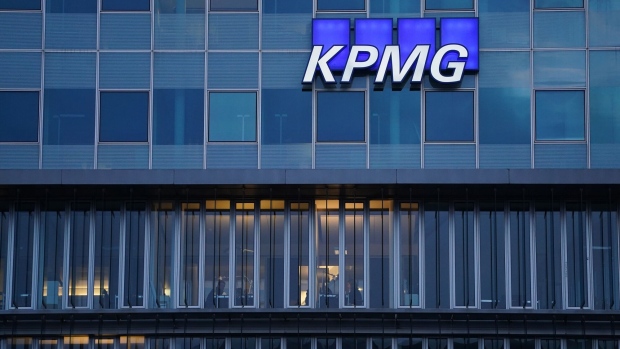Canadian inflation-protected securities known as real-return bonds are reaping gains for one of the country’s largest pension funds during a turbulent period for fixed-income markets.
Healthcare of Ontario Pension Plan (Hoopp) became an “aggressive” buyer of the inflation-linked bonds when interest rates started climbing in 2022, Chief Investment Officer Michael Wissell said in an interview. By December, the notes represented roughly half of the fund’s target portfolio allocation to bonds, he said.
“Right now, one of the most compelling things is real-return bonds,” Wissell said. “This is the ‘Get out of Jail Free Card’ here. These notes, which were for years at minus 100 basis points — even more negative in some jurisdictions — are now offering a real rate of return.”
Canada stopped issuing the bonds in 2022, making them harder to buy in larger quantities.
Hoopp said Wednesday that it posted a 9.4 per cent return last year, booking gains in fixed income, stocks, private equity and private credit. The Toronto-based pension fund — which serves about 460,000 active, deferred and retired health-care workers in Canada’s most populous province — increased exposure to bonds after yields rose in the summer and into the fall, helping net assets grow to $112.6 billion.
“We used the volatility in the fixed-income market, which, by all accounts, was pretty substantial, to continue to add real-return bonds, which are more difficult to accumulate,” Wissell said. “It is very unlikely that you will see us selling them anytime soon.”
The returns for Hoopp’s asset categories are as follows:
- Fund’s fixed-income portfolio advanced 4.3 per cent
- Public equities jumped 15.7 per cent
- Credit grew 4.6 per cent
- Private equity climbed 15.9 per cent
- Private credit gained 9.3 per cent
- Infrastructure advanced 8.2 per cent
- Real estate investments lost 6.5 per cent
“The dispersion that exists within real estate assets is hard to understand,” Wissell said. “We’re diversified across segments, and I’m not sure that I’m smart enough to know which of those segments are going to be the winners going forward because we’re seeing big price adjustments across these different sectors.”
Ontario Teachers’ Pension Plan gained 1.9 per cent last year, underperforming its benchmark by a wide margin, as it lowered valuations on real estate and infrastructure investments hit by higher interest rates.
The write-downs also stemmed from “asset-specific events that negatively impacted select investments,” the pension plan said in a statement Tuesday, without specifying more. The falling valuations cut into gains from holdings including credit and stocks.
Equities rose 20 per cent, but the fund has just 10 per cent of its assets in public equities on a gross basis.
“We did not generate investment results to desired levels,” Chief Executive Officer Jo Taylor said in an interview. “Our outlook for 2023 was pretty cautious, that’s why we have the low listed equity exposure. We thought there’s probably a reasonable chance of markets correcting, which clearly didn’t happen, particularly in the US.”
Looking forward, the pension fund positioned itself “to move forward with caution, but some more optimism in terms of the prognosis for recovery internationally,” Taylor said.
The real estate portfolio declined 5.9 per cent, compared with a 2 per cent gain for its benchmark. Infrastructure assets lost 2.8 per cent.
Real assets
Overall, Ontario Teachers’ return trailed its internal benchmark by nearly 7 percentage points. Some of the other top Canadian pension funds have also reported losses on real estate assets. But infrastructure assets have generally been resilient and continued to generate gains.
At Ontario Teachers’, real assets, which combines infrastructure and real estate, account for about 28 per cent of the portfolio. In real estate, on top of being heavily exposed to retail and offices, Ontario Teachers’ was pretty early in making cap rate change adjustments to its portfolio, Taylor said. In 2022, the pension fund increased its cap rates by about 100 basis points, and further adjusted it up 25 basis points last year, he said.
“That took a reasonable chunk out of the performance valuation of those assets just on their own,” he said. “And we’re trying to diversify away from those two sectors into other things that give us both a bit of a better balance and hopefully the ability to see different rates of return.”
'Another tough year'
Last year, the pension fund announced it would move its real estate investing team in-house, from subsidiary Cadillac Fairview Corp., and named Pierre Cherki to head the new team.
“What we want that team to do is to be really thoughtful and careful about what we add to the portfolio to try and diversify our returns and our performance,” Taylor said. “How is it going forward? I think it’s gonna be another tough year in real estate in 2024, the returns available will be marginally positive.”
Total assets managed by Ontario Teachers, which oversee pensions for about 340,000 members in Ontario, remained virtually flat at $247.5 billion at the end of 2023. Over 10 years, the pension fund had an average return of 7.6 per cent. The plan started this year fully funded, with a preliminary surplus of $19.1 billion.
On infrastructure, Ontario Teachers’ adjusted its discount rate assumptions it uses in calculating values going forward.
“We raised that by about 60 basis points to reflect higher interest rates. I don’t think many people have done that yet, but we felt we needed to do that to be a bit more realistic,” Taylor said.
Last year, Ontario Teachers’ made a bigger bet on bonds and credit and added leverage to pay for it and Taylor still sees value in these assets. It is also betting on technology through its growth equity team, Taylor said.
“The other thing we will continue to do is back good private equity businesses where we see them operating in sectors and geographies that we like,” Taylor said. “We’ve put more capital into India, for example, and into Australasia last year. We’ve been active in Europe as well. So we’re trying to get a balance between our North American activities.
Ottawa should keep its 'hands off' pension funds, says former OTPP head
SO SHOULD ALBERTA
Jordan Fleguel, BNN Bloomberg
The former head of one of Canada’s largest pension plans says the federal government should avoid telling Canadian pension funds where to direct capital, despite recent calls encouraging them to invest more at home.
Jim Leech, former president and CEO of the Ontario Teachers' Pension Plan, told BNN Bloomberg in a Tuesday interview that pension funds must remain independent of government to guarantee the best returns for Canadians.
“Hands off,” Leech said when asked what his message to Ottawa would be regarding potential changes to the current pension model.
“Canada has got the gold standard in pension plans – they are independent of government, they're not being interfered with, and they have great financial returns… don't mess with it.”
Open letter to Freeland
Leech’s comments come after dozens of high-profile business leaders signed an open letter to Finance Minister Chrystia Freeland and her provincial counterparts earlier this month, urging them to “amend the rules governing pension funds to encourage them to invest in Canada.”
Montreal-based investment management firm Letko Brosseau spearheaded the letter, which was signed by nearly 100 business leaders, including Rogers CEO Tony Staffieri and Canaccord Genuity Group CEO Dan Daviau.
Days after the letter was published, Letko Brosseau co-founder and partner Peter Letko told BNN Bloomberg that unless Canada’s pension plans start investing more domestically, the country’s financial markets and exchanges will continue to suffer.
Leech disagreed with that sentiment, saying he’s yet to hear of any major Canadian companies or projects that have had trouble securing capital when attempting to raise funds.
He also said that despite concerns around Canadian pension plans not having enough invested in Canada, most funds still have a sizeable domestic bias.
“Of the big Maple-8 funds, the least is about 15 per cent invested in Canada, and the most is around 60 per cent,” Leech said.
“I think they average out at around 40 per cent of their assets invested in Canada, so there's a huge bias. It's ten times the capital markets of Canada versus the rest of the world.”
Pension plans were once in 'serious trouble'
Leech said the main reason he opposes further government intervention in pensions is because he remembers a time roughly 30 years ago when many of Canada’s biggest funds were struggling and in need of reform.
“The Canada Pension Plan, which was in serious trouble, went through a number of reforms and came out the other end as the Canada Pension Plan Investment Board to give separate governance and separate investment,” he said.
“What's being talked about now is kind of returning back to those earlier days when, in fact, the pension plans were not independent, didn't have separate governance, and were in big trouble.”
Leech said that the government’s role should instead be to ensure Canada remains an attractive place to invest, both for Canadian and international investors.
“They have a number of levers that they can pull to try and increase the productivity of our economy,” he said.
“One of them is not forcing pension plans to artificially direct funds towards Canadian companies just because they're Canadian.”
With files from Bloomberg News


